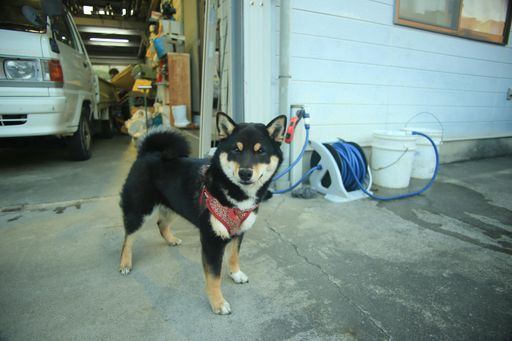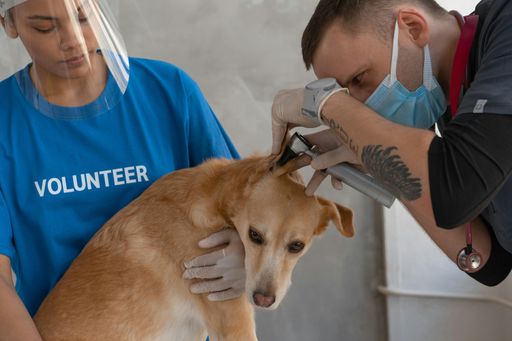It can be heart-wrenching to see your four-legged friend gradually lose their vision. Your first giveaway is probably their inability to navigate previously familiar territory. Slips, run-ins, and general confusion are typically signs of developing dog blindness.
No matter what the cause of their blindness, be it injury, cataracts, diabetes, or even simply old age, there are ways to help your blind dog adapt to their new condition and continue enjoying life. Whether your pet’s vision is partially or completely impaired, they’ll benefit from these five helpful approaches to dealing with their blindness.
Keep things where they are
It may seem like common sense at first to move around your furniture so as to form an easy path for your dog. However, that’s actually the last thing you want to do. Now that your pet has lost their vision, they’ll rely on their memory – and dogs have a great one!
Keep their toys, food bowl, and water dish where they are and they’ll form familiar paths to these objects in no time. Furthermore, keeping furniture in its place will allow them to eventually memorize a way to navigate around it. Moving these objects out of their usual spots will disorient and confuse your dog.
Visually impaired dogs will rely on what’s called “location cues”. A certain smell, the feel of a specific rug under their feet, or even a change in temperature will signify to them which room they are in, and they’ll go from there.
Eliminate hazards
While you shouldn’t rearrange your furniture, you should do your best to eliminate any obvious hazards. Use baby bumper strips to doggy-proof your home, covering up any sharp corners and edges. Place baby gates at the tops of stairs to prevent falls.
If your dog has access to your backyard, make sure to fence your pool and consider buying your dog a spacious crate or pen for when you leave the house.
To make sure you’re taking the appropriate safety measures, you may want to get on all fours and assess each room in your house. It may sound silly, but this could actually ensure you identify hazards you otherwise wouldn’t come across, such as loose floorboards, low clearances, jutting nails/screws, or slippery surfaces.
Use a halo
Blind dog halos are super helpful products that act as a bumper. Just strap it around your dog’s collar and it will surround their head, effectively catching forward-facing hazards before your dog does. It will prevent them from running into things head-on, and will help them get used to their surroundings.
Blind dog halos are great for helping your dog regain their confidence and independence. They’re lightweight, flexible, and come in all sizes. What’s more, they’ll prevent your dog from feeling hesitant and uncomfortable about walking around on their own.
Help them familiarize
Your dog will eventually learn how to navigate obstacles, but you shouldn’t let them learn that on their own. Put your dog on a leash and navigate them around the house so that they can safely process what objects are in which locations.
As you travel around every corner, and through every nook and cranny, give them time to stop and sniff around. Chances are, they’ll later identify their location based on smell as much as motor memory, so recalling the smells of certain rooms in the house will help them better determine how to navigate those rooms.
As you walk them through the house, speak to them in a calm and reassuring tone. If this is the first time they’re doing this since they’ve lost their version, they may be nervous and shaky. Reassure and remind them that you’re right beside them.
Develop a routine
One thing that blind dogs absolutely need is consistency. Change is stressful enough to healthy dogs, it’s even more nerve-wracking for visually impaired ones. So, if your daily routine consists of a walk, a noon feeding, and an afternoon trip to the dog park, keep it the same.
Furthermore, keep the same walking route and the same dog park. Your dog needs familiar surroundings as much as possible. If you ever need to hire a pet-sitter, make sure they’re aware of this routine. If you drop your dog off at a daycare facility, make sure they know the proper care tips.
The most important part of your dog’s routine, however, is you. A visually impaired dog will rely on you even more than a healthy one. Your presence is essential to their stress levels and mental well-being, so giving them the proper noise cues to identify your homecoming or presence in a room will mean the world to them.
Caring for a blind dog requires patience, but even more than that it requires compassion. With the aforementioned tools, strategies, and your utmost dedication, your visually impaired pup can live a long, happy, and fulfilling life.



















